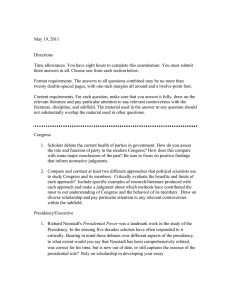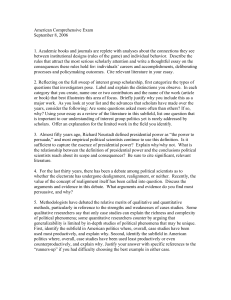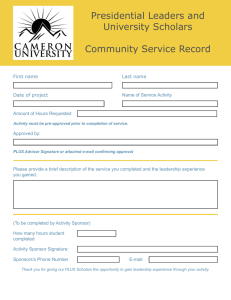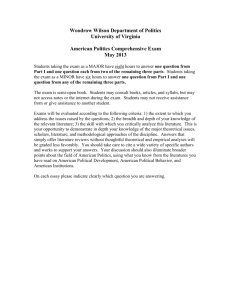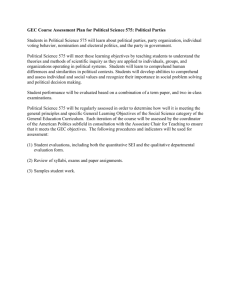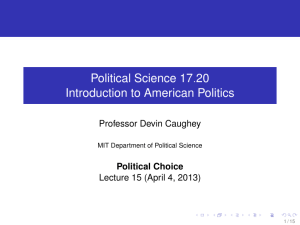September 11, 2008 Directions
advertisement
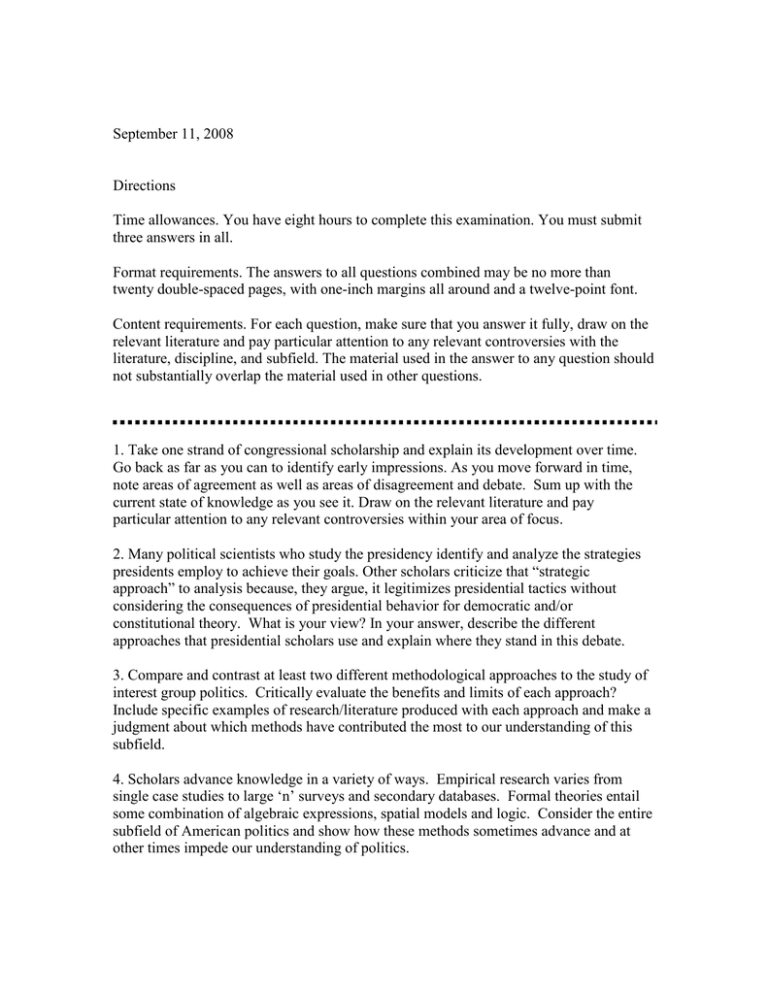
September 11, 2008 Directions Time allowances. You have eight hours to complete this examination. You must submit three answers in all. Format requirements. The answers to all questions combined may be no more than twenty double-spaced pages, with one-inch margins all around and a twelve-point font. Content requirements. For each question, make sure that you answer it fully, draw on the relevant literature and pay particular attention to any relevant controversies with the literature, discipline, and subfield. The material used in the answer to any question should not substantially overlap the material used in other questions. 1. Take one strand of congressional scholarship and explain its development over time. Go back as far as you can to identify early impressions. As you move forward in time, note areas of agreement as well as areas of disagreement and debate. Sum up with the current state of knowledge as you see it. Draw on the relevant literature and pay particular attention to any relevant controversies within your area of focus. 2. Many political scientists who study the presidency identify and analyze the strategies presidents employ to achieve their goals. Other scholars criticize that “strategic approach” to analysis because, they argue, it legitimizes presidential tactics without considering the consequences of presidential behavior for democratic and/or constitutional theory. What is your view? In your answer, describe the different approaches that presidential scholars use and explain where they stand in this debate. 3. Compare and contrast at least two different methodological approaches to the study of interest group politics. Critically evaluate the benefits and limits of each approach? Include specific examples of research/literature produced with each approach and make a judgment about which methods have contributed the most to our understanding of this subfield. 4. Scholars advance knowledge in a variety of ways. Empirical research varies from single case studies to large ‘n’ surveys and secondary databases. Formal theories entail some combination of algebraic expressions, spatial models and logic. Consider the entire subfield of American politics and show how these methods sometimes advance and at other times impede our understanding of politics. 5. Explain the key components of the importance of partisanship in the "Michigan Model" as outlined in The American Voter. Why did the strength of partisanship come under attack in the 1970s and 1980s but appears to be experiencing a revival more recently? Do you think this strengthening of partisanship will continue in the future? Your conclusion is less important than your argument. Draw on the relevant literature and pay particular attention to any relevant controversies.
